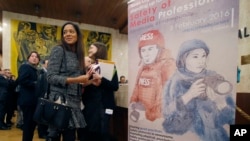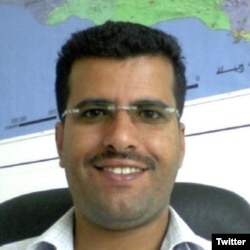Governments, courts and media organizations must do more to prevent violence against journalists covering war, crime or corruption, news industry leaders insisted Friday.
"Whether by murder, violence, arrest or intimidation, the crimes taking place against journalists have become far too common. In fact, they've become normalized,'' John Daniszewski, The Associated Press’ vice president of international news, remarked at a conference on journalist safety, which AP covered.
The international conference was organized by UNESCO, the U.N. cultural agency, at its Paris headquarters.
UNESCO member governments should uphold the concept of press freedom and "stop looking at us [journalists] as the enemy. Then we can deal with the bad guys," CNN special correspondent Christiane Amanpour told the group, according to the AP.
In tandem with the conference, the International Federation of Journalists (IFJ) released a new report showing at least 2,297 journalists and media staff have been killed since 1990.
Of those, 112 were killed last year, the New York-based Committee to Protect Journalists reported. Its website indicates at least three journalists already have been killed this year. One is Almigdad Mojalli, a freelance Yemeni reporter who was killed during an air raid by the Saudi-led coalition while he was on assignment for Voice of America.
Without the institutional backing of a business entity, freelancers confront additional risks in dangerous settings.
They’re "cannon fodder," the AP reported Diane Foley as saying at the conference. She’s the mother of James Foley, a freelance American journalist who was kidnapped in Syria and beheaded by Islamic State in 2014.
Major news organizations that use freelancers in conflict zones are sharing security information and also are discussing the creation of insurance options for these stringers, the AP said.
Conference speakers said that, when journalists experience harassment or worse, governments and the public should exert more pressure to ensure their safety and free speech — critical to freely functioning societies.
In Ukraine, where five journalists and two media workers have been killed since May 2014, the Organization for Security and Cooperation in Europe (OSCE) has begun training media professionals on how to operate in hostile environments, its website says. It says it did so at the behest of Ukraine's government.
'Shared responsibility'
The IFJ also noted that journalists and their employers have "a shared responsibility" to "educate themselves in risk assessment, avoid reckless assignments and take all necessary precautions while working in dangerous environments."
In tandem with the conference, UNESCO and the group Reporters Without Borders on Friday released a new edition of “Safety Guide for Journalists.” This version of the field guide, first issued in 1992, includes a chapter on digital safety. It’s available online, too, in English, Arabic, French and Spanish.
The IFJ report said the deadliest year on record for journalists was 2006, when 155 were killed.








